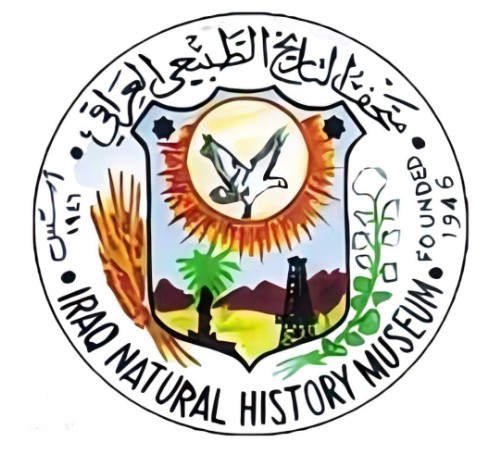THE DIURNAL BIRDS OF PREY (RAPTORS) IN THE MESOPOTAMIAN MARSHES OF SOUTHERN IRAQ WITH NOTES ON THEIR CONSERVATION STATUS
DOI:
https://doi.org/10.26842/binhm.7.2019.15.4.0381Keywords:
Avifauna, Eagles, Marshes, Mesopotamian, RaptorsAbstract
Birds of prey (Raptors) are top predator avian species that many migrate annually through Mesopotamian marshes in southern Iraq toward their wintering grounds in Arabia and Africa, while others are breeding residents; however, information on their current status is scarce. From January 2016 to April 2019, a total of 20 field expeditions were conducted in the geographical zone of the Mesopotamian marshes, wetlands of international importance. The survey covered the Central Marshes, Al-Hammar and Hawizeh Marsh. One of the objectives of the field surveys is to list the raptors species that wintering and/or migrating through the Mesopotamian marshes and to understand their current spatial and temporal distribution. In the present study, a total of 32 species of diurnal raptors are recorded through intensive field observations, reviewing literature records, and personal communications of unpublished data. Moreover, eight species listed by the International Union for Conservation of Nature IUCN Red List are recorded which highlight the ecological importance of the Mesopotamian marshes as a major stopover site for globally threatened raptors. Besides species persecution, observed threats such as habitat destruction, climate change, and pollution were severely influencing birds of prey communities in the Mesopotamian marshes which warrant further conservation actions.
Downloads
References
Allouse, B. 1953. The avifauna of Iraq. Iraq Natural History Museum, Baghdad, 163pp.
Allouse, B. 1960. Birds of Iraq. 2nd ed. Al-Rabita Press, Baghdad, Iraq, 276pp. [In Arabic].
Al-Mansori F.Y. 2008. The future expectations for the marshlands restoration. Ph.D. thesis, College of Science, Basra University, 174pp.
Al-Sheikhly O. F. 2014. Peregrine falcons wintering in Baghdad, Iraq. Falco, 42: 6-7.
Al-Sheikhly, O. F. 2011. A survey report on the raptors trapping and trade in Iraq. Wildlife Middle East, 6 (1): 1- 45.
Al-Sheikhly, O. F. 2012. Report on the first record of Red-footed Falcon Falco vespertinus in Iraq. Falco, 39: 10-11.
Al-Sheikhly, O. F., Al-Barazangi, A. N., Mukhtar, K.H., Fazaa, N., Abdulzahra, H. K., Abou Turab, M. K. and Al-Azawi A. J. 2017. Ring recoveries from Steppe eagles and Eastern Imperial eagles from the Russian and Kazakhstan breeding populations and a review of major threats to eagles in Iraq. Raptors Conservation, 35: 51-61.
Ararat, K. 2016. First record of Lesser Spotted Eagle Clanga pomarina, first breeding record of Eurasian Penduline Tit Remiz pendulinus and first records of Eastern Bonelli's Warbler Phylloscopus orientalis, Olive Tree Warbler Hippolais olivetorum and Goldcrest Regulus regulus, for Iraq. Sandgrouse, 38(1): 106-109.
Ararat, K., Fadhil O., Porter, R. F. and Salim, M. 2011. Breeding birds in Iraq: important new discoveries. Sandgouse, 33 (1): 12-33.
Bildstein, K. L. 2006. Migrating raptors of the world: their ecology and conservation. Cornell University Press, Ithaca, USA, 320pp.
Birdlife International. 2018. Data zone: Iraq. Available at: http://datazone.birdlife.org/country/iraq
Blair, M., Perlman, Y. and Sheldon, R. 2018. Pocket checklist of the birds of OSME region. Ornithological Society of Middle East, the Caucasus and central Asia, UK, 64pp.
Boere, G. C. and Stroud, D. A. 2006. The flyway concept: what it is and what it isn’t, p 40–47. In: Boere, G. C., Galbraith, C. A. and Stroud, D. A. (eds.). Waterbirds around the world. Edinburgh, UK: The Stationery Office.
Buechley, E. R., McGrady, M. J., Çoban, E. and Şekercioğlu, Ç. H. 2018. Satellite tracking a wide ranging endangered vulture species to target conservation actions in the Middle East and East Africa. Biodiversity and Conservation, 27 (9): 2293–2310.. DOI: 10.1007/s10531-018-1538-6
Clark, W. S. 2000. A Field guide to the raptors of Europe, the Middle East, and North Africa, illustrated edition.USA: Oxford University Press, USA, 371pp.
Cumming, W. D. 1918. Natural history notes from Fao. Journal of the Bombay Natural History Society, 26: 292–295.
Donald, C. H. 1919. Some birds of prey of Mesopotamia. Journal of the Bombay Natural History Society, 26: 845-846.
Evans, M. I. 1994. Important Bird Areas in the Middle East. Cambridge, UK: BirdLife International, 410 pp.
Fazaa, N. A., Dunn, J. C. and Whittingham, M. J. 2017. Distributions and community composition of birds in Iraq’s Central Marsh. International Journal of Biodiversity, 2017(4198690):1-28.
Hahn, S., Bauer, S. and Liechti, F. 2009. The natural link between Europe and Africa -2.1 billion birds on migration. Oikos, 118: 624–626.
Hussain, N. A. 2014. Biotopes of the Iraqi marshes. First Edition. Dhifaf publishing house, Basra, Iraq, 432pp.
IMOE. 2018. Sixth National Report of Iraq to the Convention of Biological Diversity. Iraqi Ministry of Environment, Baghdad, Iraq, 292pp.
IUCN-International Union for Conservation of Nature. 2017. The Guidelines for Using the IUCN Red List Categories and Criteria version. Available at: https://www.iucnredlist.org/resources/redlistguidelines
Karyakin, I. 2105. The steppe eagle global conservation status was raised. Raptors Conservation, 30: 21-30.
Karyakin, I., Bekmansurov, R. and Babushkinv, M. 2018a. Study of territorial connections in eagles by color ringing method within the program of the Russian raptor research and conservation. Raptors Conservation, 37: 15-48.
Karyakin, I. V., Bekmansurov, R. H., Nikolenko, E. G. and Dzhamirzoev, G. S. 2018b. Monitoring results from the breeding group of Egyptian Vulture at Narat-Tyube ridge and GPS/GSM tracking data from Juvenile Egyptian Vultures (Republic of Dagestan, Russia). Raptors Conservation, 36: 108–135. DOI: 10.19074/1814-8654-2018-36-108-135
Maxwell, G. 1957. A reed shaken by the wind; a journey through the unexplored marshlands of Iraq. Penguin, Harmondsworth, 223pp.
Meinertzhagen, R. 1914. Notes from Mesopotamia. Ibis, 2(10): 387-395.
Meinertzhagen, R. 1924a. An account of a journey across the Syrian Desert from Amman to Ramadi. Ibis, 6(11): 87-101.
Meinertzhagen, R. 1924b. Notes on a small collection of birds made in Iraq in the winter of 1922-23. Ibis, 6(11): 601-625.
Meyburg, B. U. and. Chancellor, R. D. (eds). 1994. Raptor conservation today. World Working Group on Birds of Prey and Owls, Berlin, Germany, 799pp.
Moore, H. J. and Boswell, C. 1956. Field observations on the birds of Iraq. Iraq Natural History Museum, Baghdad, 109pp.
Nature Iraq. 2017. Key Biodiversity Areas of Iraq. Al-Ghadeer Printing, Basra, Iraq, 297pp.
Newton, I. and Chandler, R. D. 1985. Conservation studies on raptors. ICBP Technical Publication No. 5. International Council for Bird protection, Cambridge, England, 482pp.
Porter, R. F. and Aspinall, S. 2010. Birds of the Middle East. Christopher Helm, London, 384pp.
Rader, R. B., Batzer, D. P. and Wissinger, S. A. (eds). 2001. Bioassessment and Management of North American Freshwater Wetlands. John Wiley and Sons, New York, NY, USA, 489pp.
Richardson, C. J., Reiss, P., Hussain, N. A., Alwash, A. J. and Pool, D. J. 2005. The restoration potential of the Mesopotamian marshes of Iraq. Science, 307: 1307-1311.
Salim, M. A., Al-Sheikhly, O. F., Majeed, K. A. and Porter, R. F. 2012. Annotated checklist of the birds of Iraq. Sandgrouse, 34(1): 3-44.
Salim, M., Porter, R. and Rubec, C. 2009. A summary of birds recorded in the marshes of southern Iraq, 2005–2008. BioRisk, 3: 205–219.
Scott D. A. 1995. A directory of Wetland in the Middle East. IWRP; Slimbridge, UK, 301pp.
Scott, D. A. 1993. Wetlands of West Asia - A regional overview. In: Moser, M. and van Vessem, J. (eds), Wetland and Waterfowl Conservation in South and West Asia: 9-22. Proc. International Symposium, Karachi, Pakistan 14-20 December 1991. IWRB Special Publication No. 25. AWB Publication No. 85. IWRB, Slimbridge, U.K. and AWB, Kuala Lumpur, Malaysia. No. 3, p 67-77.
Scott, D. A. and Carp, E. 1982. A midwinter survey of wetlands in Mesopotamia, Iraq: 1979. Sandgrouse, 4: 6-76.
Sutherland W. J. 2006. Ecological census techniques: a Handbook. Cambridge University Press, UK, 432 pp.
Thesiger, W. 1964. The Marsh Arabs. Longmans, Green & Co. Pub., London, 326pp.
Ticehurst, C. B, Buxton, P. A. and Cheesman, R. E. 1922. The birds of Mesopotamia. Journal of the Bombay Natural History Society, 28: 381-427.
Ticehurst, C. B., Cox, P. Z. and Cheesman, R. E. 1926. Additional notes
on the avifauna of Mesopotamia. Journal of the Bombay Natural History Society, 31: 91-119.
White, C. M., Sonsthagen, S. A., Sage, G. K., Anderson, C. and Talbot, S. L. 2013. Genetic relationships among some subspecies of the peregrine falcon Falco peregrines (L.), inferred from mitochondrial DNA control-region sequences. The Auk, 130: 78-87.











